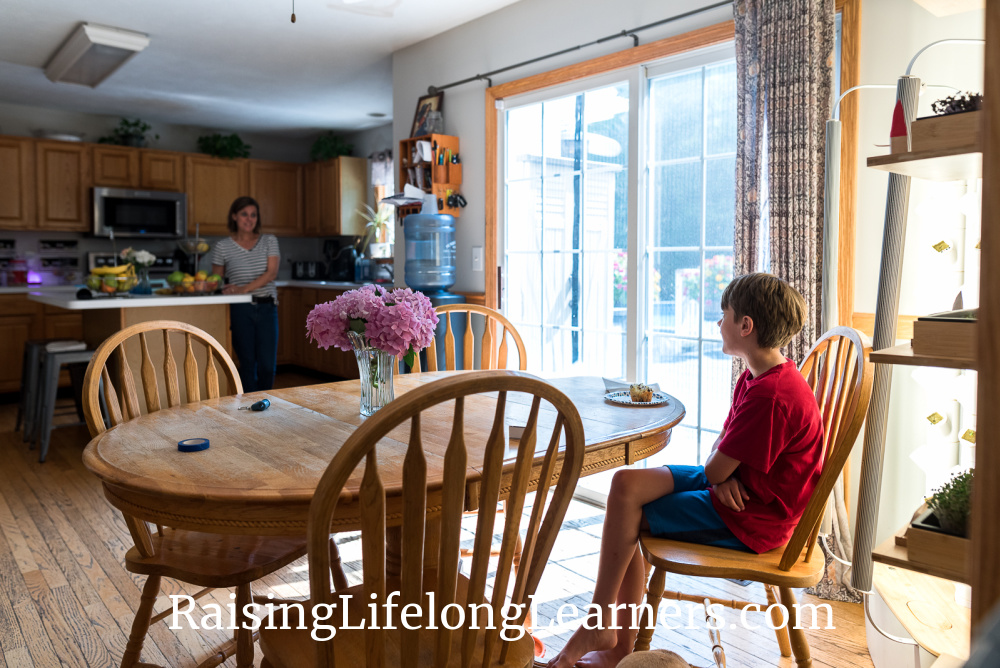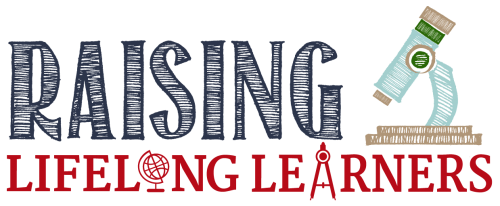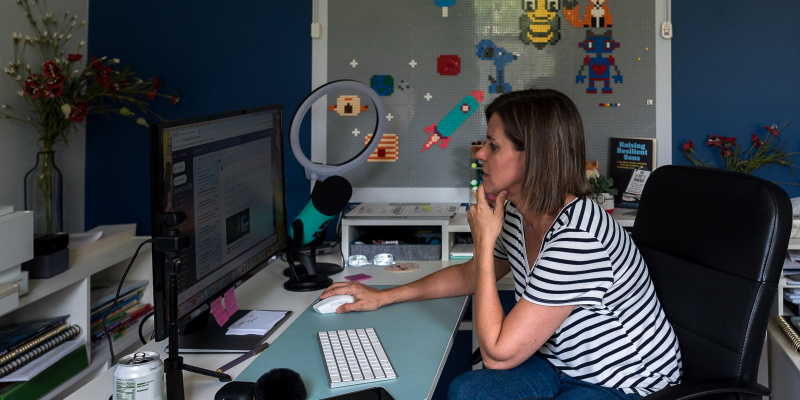A Thriving Homeschool | Strategies for Setting Boundaries
When it comes to homeschooling, striking the right balance between teaching responsibilities and personal life can be like walking a tightrope. It’s an intricate dance of dedication to our children’s education while also honoring boundaries that ensure family time, personal space, and self-care are not compromised. As homeschooling parents, carving out these boundaries is not just beneficial; it is essential.

One of the most important parts of homeschooling is making sure there are clear rules. It’s not enough to just make a place to learn; we also need to be aware of when we change roles from teacher to parent and, when necessary, back to being “me.”
There are many times during the day when we want to switch between roles. This makes homeschooling parents especially vulnerable to the “always-on” mindset. When we’re with our families, how often do we check our emails or allow lesson planning to spill into the weekend?
Setting aside specific times for work and family is important for keeping a healthy homeschooling atmosphere. Finding out what’s really important and choosing to focus on that can make all the difference.
The Myth of Balance: Embracing the Ebb and Flow
The pursuit of perfect balance in parenting and homeschooling is a misnomer, as it implies a static state – one we reach and maintain. Reality paints a different picture, one of constant adjustment and prioritization. Acknowledge that every day may not be perfectly segmented and that sometimes certain aspects will take precedence.
What requires attention now may not be as urgent tomorrow. This adaptive approach involves recognizing that our personal and professional needs will evolve, as will our children’s needs, especially as they age. The art lies in being fluid with our boundaries, allowing them to expand and contract as life’s demands ebb and flow.
The Personal Touch: Incorporating Family Dynamics
Our boundaries should mirror who we are as a family. This isn’t about adopting a one-size-fits-all method, but rather customizing our boundaries to fit our family dynamics. Recognizing early on that our children need different levels of attention and engagement based on their ages, interests, and learning styles is critical. In response, we might limit certain extracurricular activities or create more structured schedules for others.
We need to teach our kids that it’s okay to say no and to choose priorities, paving the way for their future success. By showing them how we handle our work and personal commitments, we’re modeling behaviors they will carry into adulthood.

Building Blocks: Developing Time Management and Executive Function Skills
Effective homeschooling requires a high level of organization and the ability to juggle multiple tasks efficiently. For parents, especially those with neurodiverse children, cultivating time management and executive function skills is paramount. But what does this look like in practice?
It starts with setting concrete goals and constructing a feasible schedule. By incorporating tools like calendars and color-coded to-do lists, we create visual cues that can steer us back on track when the whirlwind of daily life takes over. Involving our kids in meal planning or chore charts can also give them a sense of ownership and teach them valuable life skills.
Finding the Village: Seeking Support and Community
Amid the boundary-setting, teaching, and managing household chaos, it’s easy to feel isolated. Seeking a supportive community, such as joining online groups or local homeschooling networks, can be transformative. Engaging in discussions with other parents facing similar challenges helps validate our experiences, offers different perspectives, and serves as a reminder that we are not alone in this journey.
Moreover, such communities can be a wellspring of resources. Whether it’s sharing strategies for dealing with overwhelmed learners or understanding how to cater to different learning abilities, tapping into the collective wisdom of fellow homeschooling families can be incredibly enlightening and empowering.
The Power of “No”: A Lesson for All Ages
Central to sustaining boundaries is the ability to say “no.” While this two-letter word can be difficult to utter, it conveys strength and self-awareness. It’s not about being inflexible; rather, it’s about recognizing limits and advocating for oneself.
Encouraging our children to recognize and communicate their boundaries is equally imperative. We do this not by forcing our own limits upon them, but by guiding them to understand their comfort zones and to articulate when something doesn’t align with their needs or interests.

Closing the Book: Embracing the Imperfect Journey
As we maneuver through the ever-changing landscape of homeschooling, we can take solace in the fact that setting boundaries is not a science, but an art—one that requires patience, resilience, and the willingness to embrace imperfection. Let’s remind ourselves to take a step back, breathe, and enjoy the journey, for it is in these imperfect moments that the greatest lessons often emerge.
Remember, while we strive to provide the best educational experience for our children, attending to our own well-being and preserving the boundaries that protect our family’s harmony are equally vital parts of the homeschooling equation. Let our focus be on nurturing a lifelong love of learning, within a framework that honors our individual needs and collective growth.
RLL#237: A Thriving Homeschool | Strategies for Setting Boundaries
As dedicated homeschoolers and parents, we often find ourselves juggling the demands of educating our children, managing our professional lives, and maintaining personal well-being. It’s a balancing act that calls for solid boundaries. In our latest episode, Colleen delves into the art of setting and adapting these vital limits.
Take a listen as Colleen shares invaluable insights stemming from her own recent hiatus and the deeper exploration of boundaries in homeschooling environments:
Key Takeaways:
- Setting Boundaries: Learn the significance of establishing boundaries to maintain a healthy balance between homeschooling, work, and family life.
- Managing Time: Get inspired by Colleen’s personal journey towards better time management and organization, which is especially crucial for parents with neurodivergent children.
- Modeling Healthy Behavior: Discover the importance of teaching our children to set their own boundaries and prioritize, a skill essential for lifelong success.
Links and Resources from Today’s Show
- Pre-Order – The Homeschool Advantage: A Child-Focused Approach to Raising Lifelong Learners
- Raising Lifelong Learners Membership Community – The Learners Lab
- Raising Resilient Sons by Colleen Kessler, M.Ed.
- Finding Homeschool Balance
- Masterclass | Prioritizing Self-Care
- Dear Mom With Quirky Kids: You Cannot Do it All
- Self-Compassion for a Healthier Mindset | A Conversation with Michelle Brownell
- Finding Energy to Balance it All
- Thriving Together | Creating Supportive Environments in Homeschooling
- My Neurodivergent Kiddo Needs So Much Help…
- Self-Care and Co-Regulation | Balancing Parenting and Sensory Needs
- Boundaries Updated and Expanded Edition: When to Say Yes, How to Say No To Take Control of Your Life – NEEDS AFFILIATE LINK
- Masterclass | Building Family Connections
- Finding Peace in a Life Filled with Intensity
- Prioritizing Self-Care is Important for You and Your Kids
Leave a Rating or Review
Doing so helps me get the word out about the podcast. iTunes bases their search results on positive ratings, so it really does help — and it’s easy!
-
- Click THIS link to go to the podcast main page.
- Click on View in iTunes under the podcast cover artwork.
- Once your iTunes has launched and you are on the podcast page, click on Ratings and Review under the podcast name. There you can leave either or both! Thanks so much.

